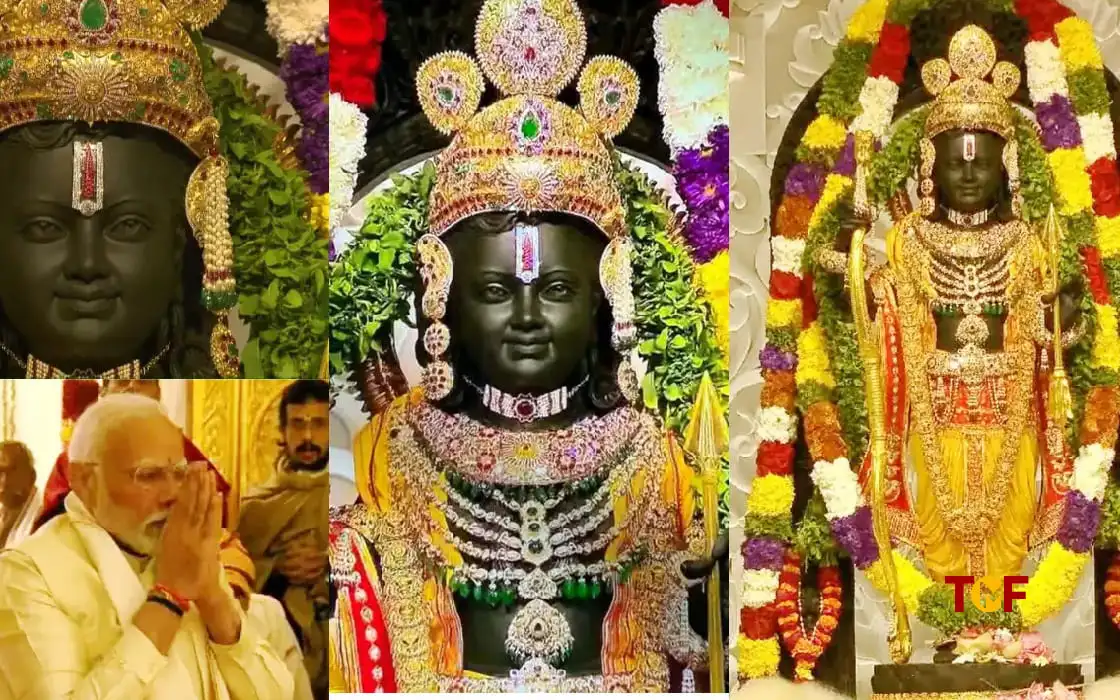Journey up till Ram Mandir Pran Pratishtha
Since the 1980s, Vishva Hindu Parishad (VHP), Hindu Mahasabha and Rashtriya Swayamsevak Sangh (RSS) had been unyieldingly pushing for the building of Ram Mandir on the disputed site of Ayodhya. Mandir wahi banayenge was one of the focal slogans advocating the building of Ram Mandir.
In 2019, the Supreme Court of India delivered the verdict to give the disputed land to Hindus for the construction of a temple, while Muslims would be given land elsewhere to construct a mosque. The court referenced a report from the Archaeological Survey of India (ASI) as evidence suggesting the presence of a structure beneath the demolished Babri Masjid, that was found to be non-Islamic.
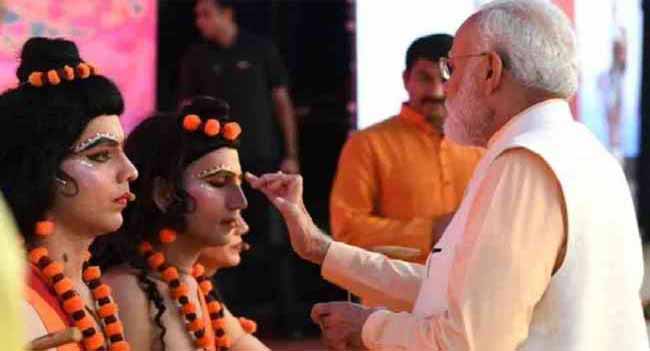
In the Supreme Court’s verdict on the Ayodhya dispute in 2019, it was decided that the disputed land would be handed over to a trust formed by the Government of India for the construction of a Ram temple. The trust was eventually formed under the name of the Shri Ram Janmabhoomi Teerth Kshetra.
On 5 February 2020, it was announced in the Parliament of India that the government under Prime Minister Narendra Modi had accepted a plan to construct the temple. Two days later, on 7 February, 2.0 hectares (5 acres) of land were allocated for a new mosque to be built 22 km (14 mi) away from Ayodhya in Dhannipur village. And on 5 August 2020, the Bhumi Pujan for the inauguration of the construction of Ram Mandir was performed by Narendra Modi, Prime Minister of India.
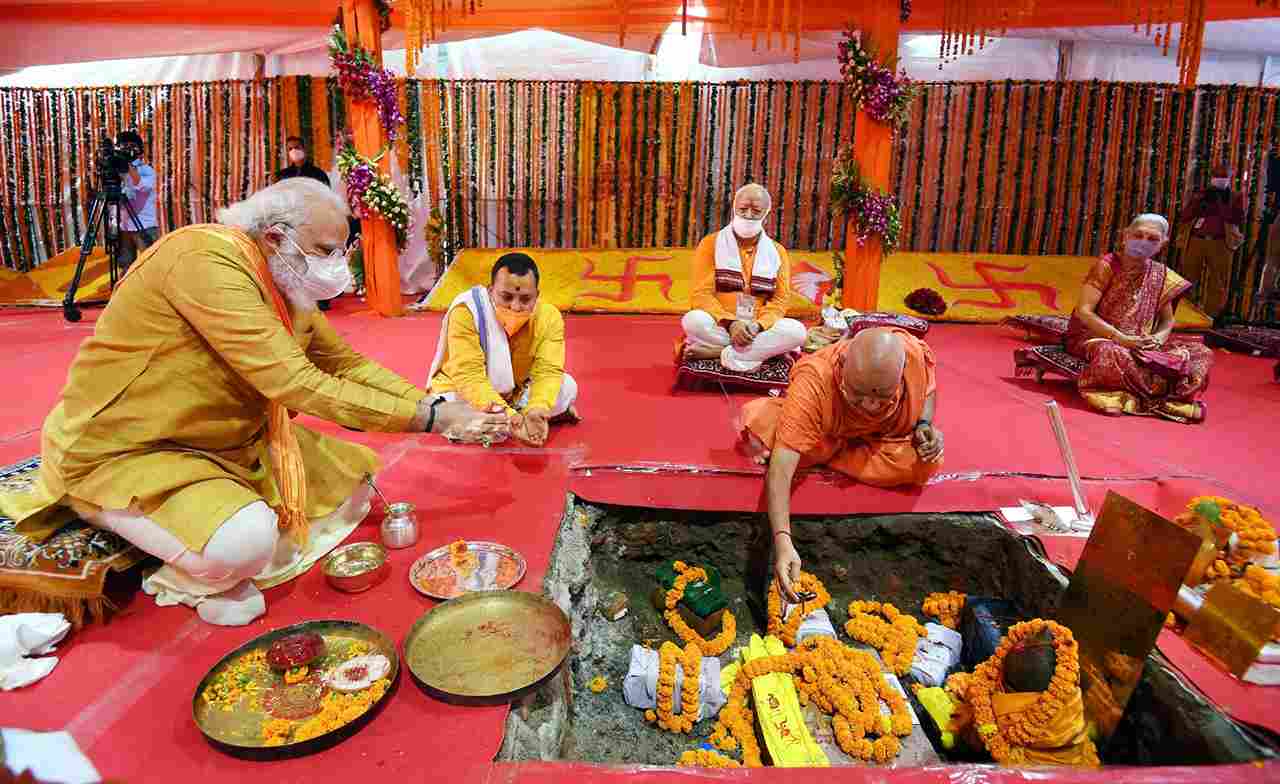
Structure of the Ram Mandir
The temple has a total of 366 columns. The columns have 16 idols each to include the incarnations of Shiva, the 10 Dashavataras, the Chausath Yoginis, and the 12 incarnations of the goddess Saraswati. The width of the stairs are 4.9 metres (16 ft). Per scriptures dedicated to the design of temples dedicated to Vishnu, the holy place is octagonal in shape. The temple covers an area of 4.0 hectares (10 acres), while the remaining 23 hectares (57 acres) of land has been developed into a complex with a prayer hall, a lecture hall, an educational facility and other facilities including a museum and a cafeteria. According to the temple committee, the site has a capability to handle 70,000 visitors.
Larsen & Toubro offered to oversee the design and construction of the temple free of cost, and became the contractor of the project. The Central Building Research Institute, National Geophysical Research Institute and the Bombay, Guwahati and Madras IITs have assisted in areas such as soil testing, concrete supply and design.
The construction work has been accomplished with 17,000 m3 (600,000 cu ft) of sandstone from Baansi in Rajasthan. No iron and steel have been used in the construction of the temple, and the fusing of the stone blocks has required ten thousand copper plates.
In January 2023, two 60-million-year-old Shaligram rocks, 26 tonnes and 14 tonnes respectively, were sent from the Gandaki river in Nepal. These rocks were used to carve the idol of Ram Lalla in the temple. In August 2023, according to the Shri Ram Janmabhoomi Teerth Kshetra Trust, 70% of the groundwork was completed and 40% of the roof work was completed.
In December 2023, the entire base, along with the six smaller temples that surround the main temple, which consists of the sanctum sanctorum, were almost completed. The temple and its premises were completed.
Inauguration: pran pratishtha ceremony
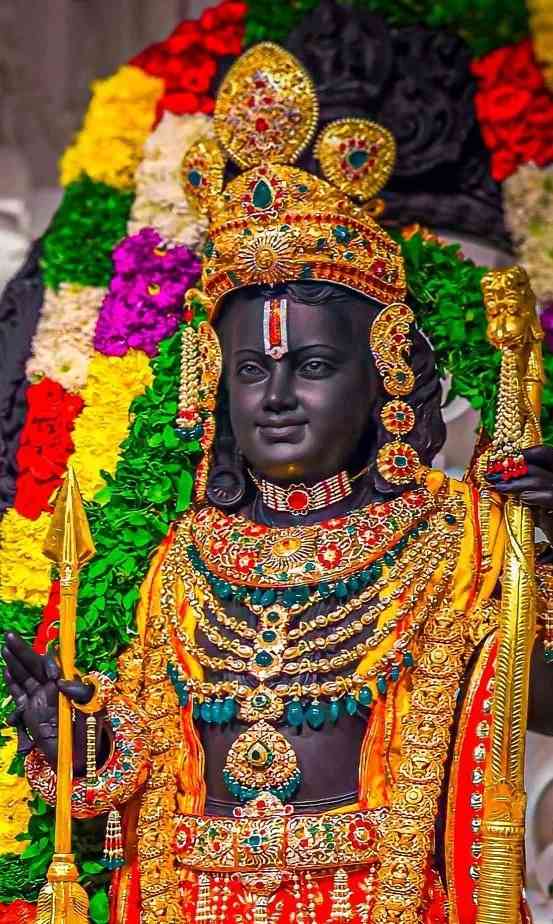
The date and the muhurat have been chosen for the pran pratishtha according to Hindu scriptures, as Lord Ram was born in abhijeet muhurat in alignment with Mrigashira Nakshatra, Amrit Siddhi Yoga and Sarvartha Siddhi Yoga aligned.The temple is being supervised by the Shri Ram Janmabhoomi Teerth Kshetra Trust. And the Pran Pratishtha ceremony was also organised by the trust.
On 22 January 2024, Modi served as the chief patron of rituals for the event and performed the Prana Pratishtha (consecration) of Ram Lalla. The ceremony started with a morning puja followed by the Pran Pratishtha of Ram Lalla in ‘Mrigashira Nakshatra’. Rose petals were showered by the helicopters on the attendees.
Along with the Prime Minister Narendra Modi, Chief Minister of Uttar Pradesh Yogi Adityanath, Chief of the RSS, Mohan Bhagwat and Chief of the Shri Ram Janmabhoomi Teerth Kshetra, Nritya Gopal Das were also present for the inauguration of the Ram Mandir ceremony.
The inauguration ceremony of Ram Lalla at the Ram Mandir was attended by almost 7000 eminent guests, including prominent politicians, sportspersons, spiritual gurus, film stars and industrialists.
President Droupadi Murmu, Vice President Jagdeep Dhankhar, Uttar Pradesh Governor Anandiben Patel, senior BJP leaders like LK Advani, Murli Manohar Joshi along with many other politicians.
Film celebrities such as Amitabh Bacchan, Abhishek Bacchan, Rajinikanth and Dhanush, Ram Charan and Chiranjeevi, Vivek Oberoi, Sonu Nigam,Kangana Ranaut, Anupam Kher, Tiger Shroff, Asha Bhosale, Madhuri Dixit Nene, Vicky Kaushal, Katrina Kaif, Ayushmann Khurrana, Ranbir Kapoor, Alia Bhatt, Randeep Hooda and Lin Laishram, and filmmakers Rajkumar Hirani, Rohit Shetty, Subhash Ghai, Shankar Mahadevan, Anuradha Paudwal and Malini Awasthi, Hariharan attended the ceremony.
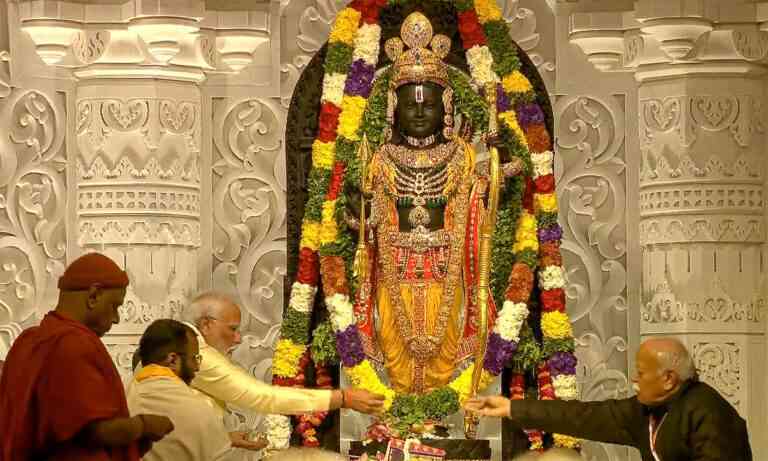
Cricketers Anil Kumble, Sachin Tendulkar, Venkatesh Prasad, Mithali Raj and badminton player Saina Nehwal. Senior industrialists, such as Mukesh Ambani and his family, Sunil Mittal and Anil Ambani, Aditya Birla Group chairman, Kumar Mangalam Birla and Ananya Birla and others were also present at the ceremony.
Spiritual leaders such as Sadvi Ritambhara, Shri Rambhadracharya, Morari Bapu, Swami Vijayendra Saraswati, Baba Ramdev, Baba Bagehwar, and Gurinder Singh Dhillon among others were also present at the ceremony. Also, the Ram Mandir Pran Pratishtha was celebrated by all the Hindus across India.
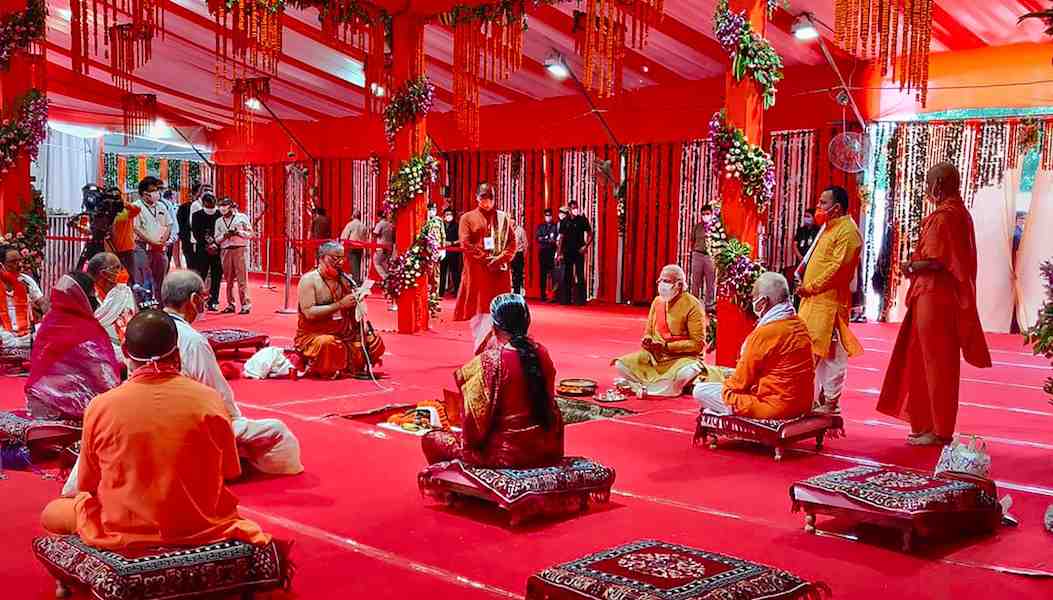
The temple opened its doors to the public in the morning after the consecration of Lord Ram’s idol on Monday. Both locals and visitors gathered near the main gateway along the Ram Path leading to the temple complex late on Monday night, seeking an early entry to the premises the following morning.
To read more such content visit TMF blogs. The Media Flair also offers marketing and consulting services; such as, Digital Marketing, Political Consultancy, and Political Campaign Management. To know more, visit the Media Flair website.
